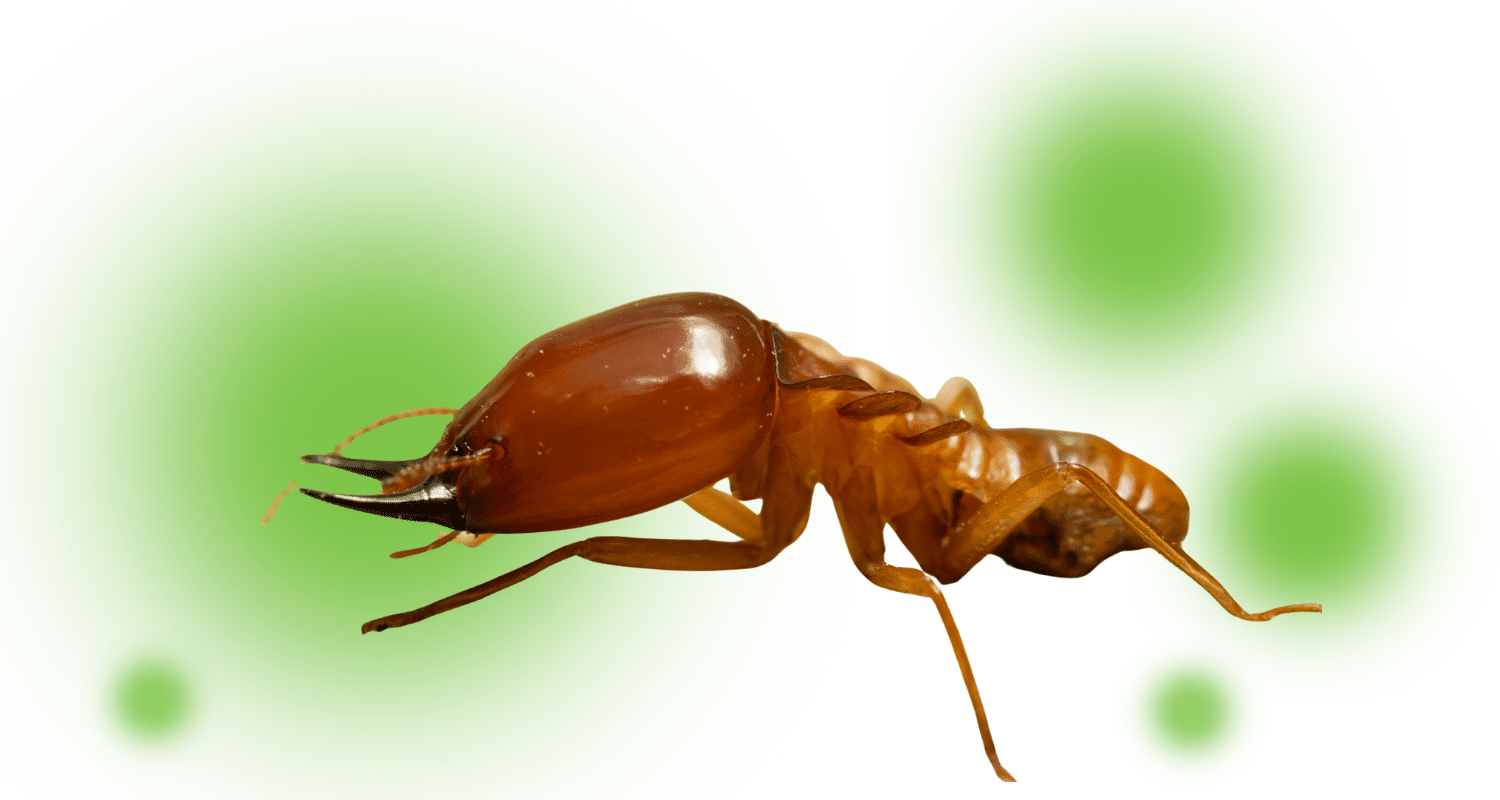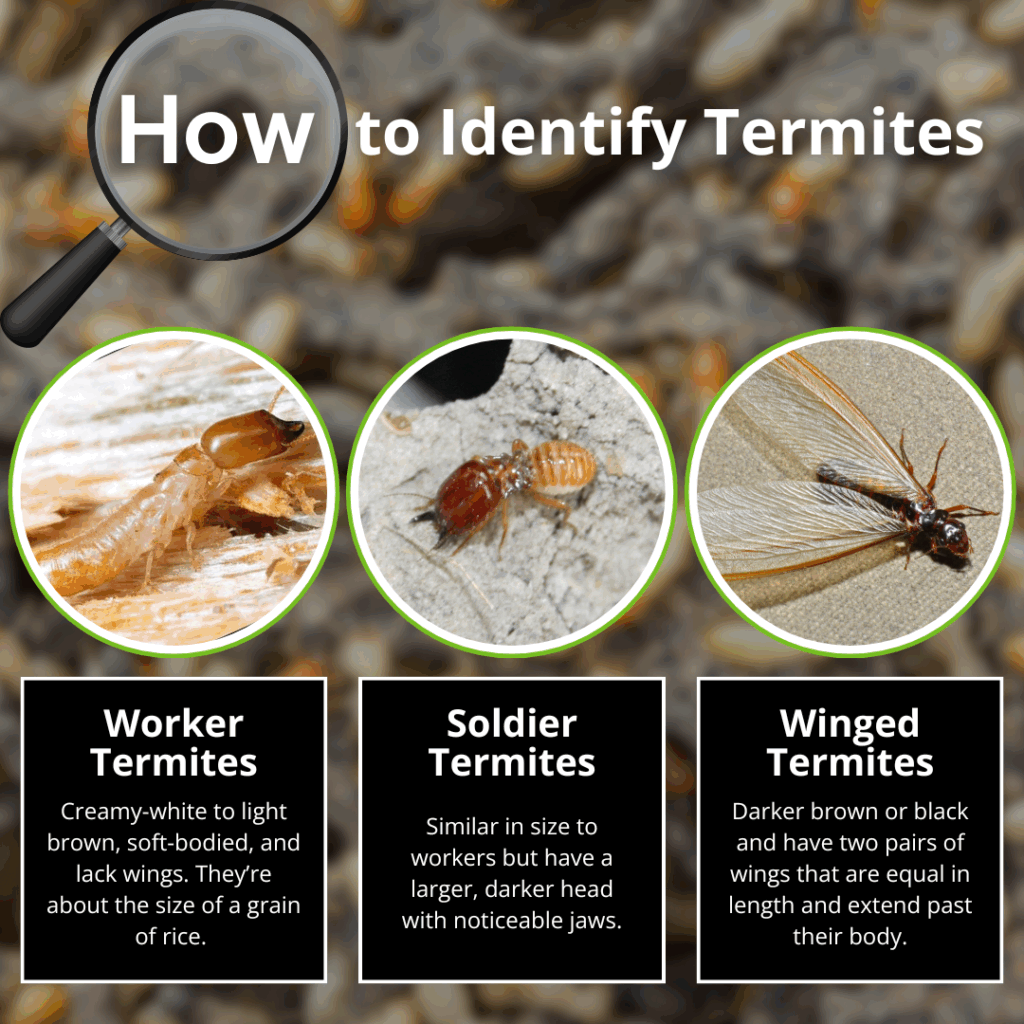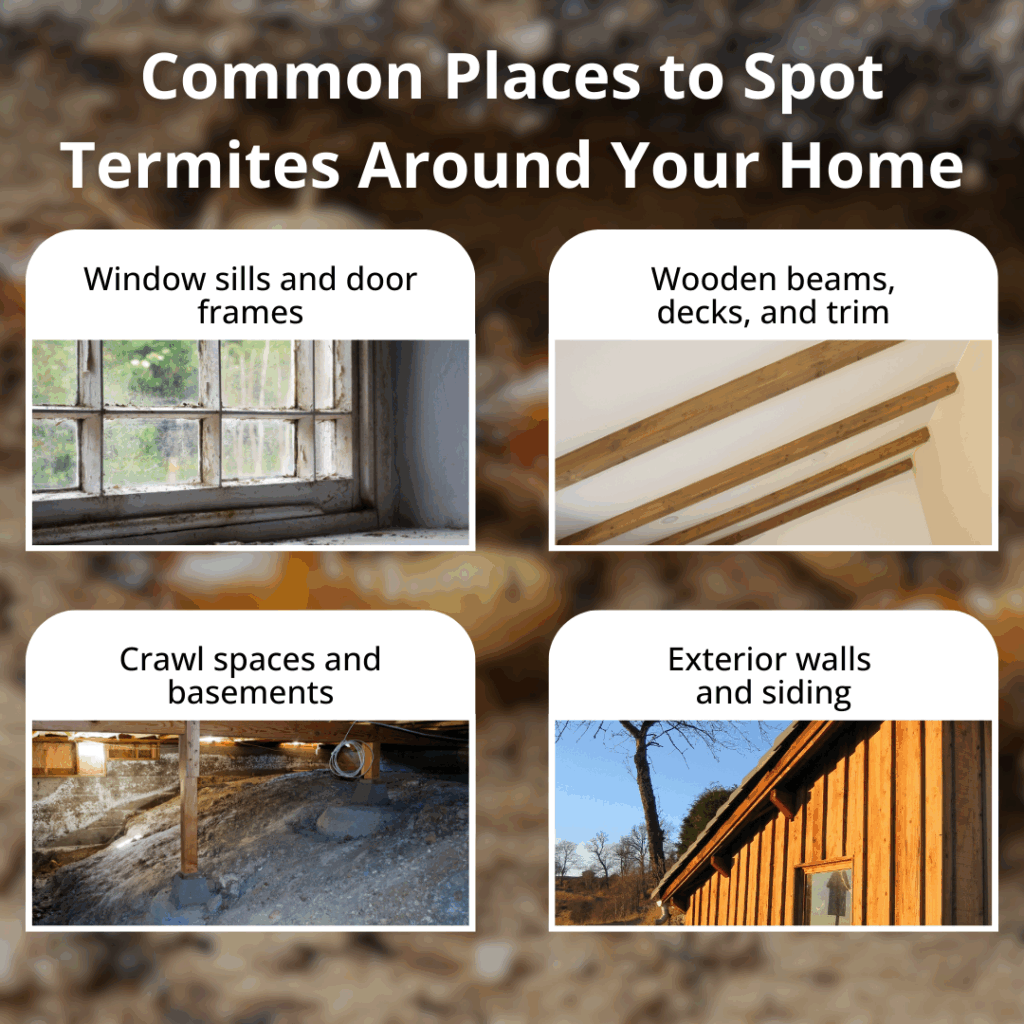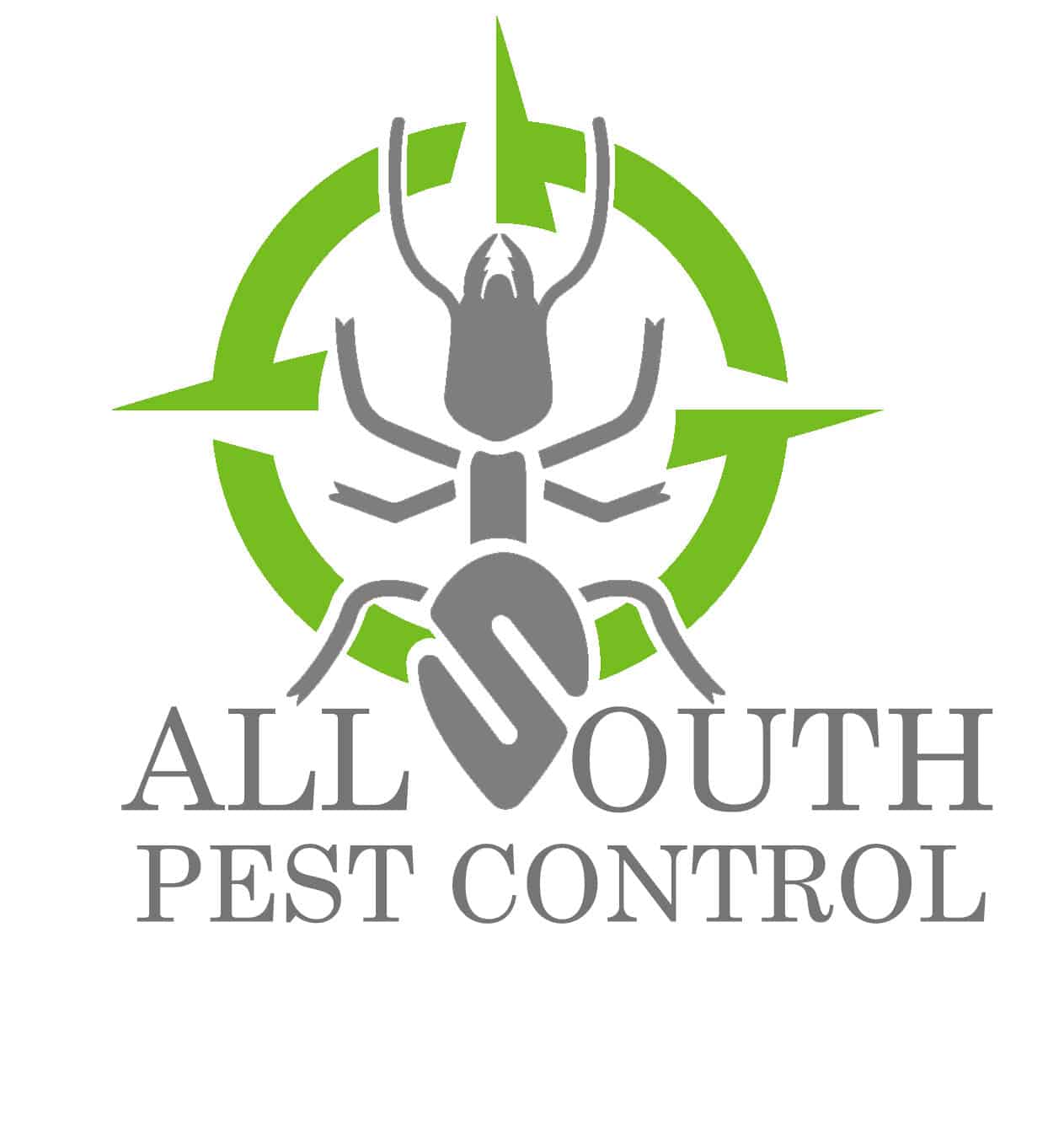
Many homeowners start to worry when they notice signs of damage in their home and wonder, “what do termites look like?” Termites are small insects that can cause serious damage to homes before you even know they’re there.
Most are between ⅛ and ½ inch long, have straight antennae, a thick waist, and soft bodies. Their color varies depending on their role in the colony: workers are pale or creamy-white, soldiers are tan with darker heads, and swarmers are dark brown or black with two pairs of equal-length wings.
Knowing what termites look like is one of the first steps in protecting your home from costly damage.
In the U.S., termites cause more than $5 billion in property damage each year according to the National Pest Management Association (NPMA).
In Georgia, where the warm, humid climate keeps them active year-round, being able to spot them quickly is essential.

How to Identify Termites at a Glance
While termites are small, there are specific features that make them easy to identify once you know what to look for.
- Worker termites are the most common type you’ll see if there’s an infestation. They’re creamy-white to light brown, soft-bodied, and lack wings. They’re about the size of a grain of rice. Workers are responsible for gathering food, which means they’re the ones actively eating your home’s wood.
- Soldier termites are similar in size to workers but have a larger, darker head with noticeable jaws. Their role is to protect the colony from predators like ants. Seeing soldiers usually means the colony has been disturbed.
- Winged termites (swarmers) are the reproductive members of the colony. They are darker brown or black and have two pairs of wings that are equal in length and extend past their body. After swarming, they shed their wings — finding piles of wings near windows or lights is often one of the first signs homeowners notice.
Termites vs. Ants
It’s common to mistake termites for ants, especially during swarming season when both can be seen flying around lights or windows. The easiest way to tell them apart is by looking closely at their antennae, waist, and wings.
Termites have straight antennae, a thick and uniform waist, and two pairs of wings that are the same size. Ants have elbowed antennae, a narrow pinched waist, and two pairs of wings where the front pair is longer than the back pair.
If you see a small insect with a thick waist and straight antennae inside your home, especially if it has wings of equal size, there’s a good chance you’re looking at a termite and not an ant.
Common Places to Spot Termites Around Your Home
Termites are experts at staying hidden, but they leave behind signs if you know where to look. Some of the most common places you might find them include:
- Window sills and door frames – Discarded wings often collect here after swarming.
- Wooden beams, decks, and trim – Look for small holes, grooves, or wood that feels soft when pressed.
- Crawl spaces and basements – Mud tubes, which are small, pencil-sized tunnels made of soil, are a clear sign of subterranean termites. These tubes help termites travel from the ground to your home while staying protected from light and air.
- Exterior walls and siding – Bubbling or cracked paint can sometimes be caused by termites eating the wood underneath.
In Georgia, termites don’t have a “season.” They can be active all year. This is why regular inspections are recommended even in winter.

Termite Life Cycle and What It Means for Homeowners
Termites live in a structured colony and develop through three main stages of a lifecycle: egg, nymph, and adult.
- Egg stage – Eggs are laid deep inside the nest, safe from predators and homeowners.
- Nymph stage – Nymphs are immature termites that will grow into workers, soldiers, or swarmers depending on the colony’s needs.
- Adult stage – Workers feed and care for the colony, soldiers defend it, and swarmers reproduce.
A mature termite colony can have up to two million members and can produce thousands of swarmers. Once swarmers leave the colony, they pair off, find a new location, and start a new nest. This is how infestations spread.
Signs You May Have a Termite Problem
The NPMA notes that termites rarely come out in the open, which makes early detection tricky. Watch for:
- Discarded wings near windows, doors, or light fixtures
- Mud tubes on walls, foundation, or in crawl spaces
- Wood that sounds hollow when tapped
- Bubbling, cracked, or peeling paint without water damage
- Small piles of sawdust-like droppings (called frass)
Catching these signs early can save homeowners thousands in repairs.
Environmental Conditions That Attract Termites
Termites are drawn to moisture and easy access to wood. In Georgia, high humidity makes conditions even more favorable for them. Common risk factors include:
- Moisture problems – Leaks, clogged gutters, or poor drainage can keep soil damp and inviting.
- Wood-to-soil contact – Deck posts, fence posts, or siding that touches the ground provide a direct route for termites.
- Firewood storage – Keeping untreated wood stacked against your home can attract termites.
- Dense landscaping – Plants that touch the siding can hold moisture and give termites cover.
Addressing these issues can greatly reduce the risk of an infestation.
Related Questions
Do termites bite humans?
No. Termites eat cellulose from wood and plants, not people.
How long do termites live?
Workers live for one to two years, while queens can live for more than a decade.
When do termites swarm in Georgia?
Most swarms occur in spring, but some species in Georgia swarm in fall as well.
Can you see termites with the naked eye?
Yes. While small, they are visible without special equipment if you know where to look.
Stay Ahead of Termite Damage
Knowing what termites look like and where they hide can help you spot an infestation before it gets out of hand. In Georgia’s climate, termites are a year-round concern, which makes regular inspections an important part of home maintenance.
If you’ve noticed any signs of termites or want peace of mind, All South Pest Control can help. Our team provides thorough inspections and effective treatments to protect your home year-round.
Learn more about our termite control services or call us today to schedule an inspection.

Recent Comments